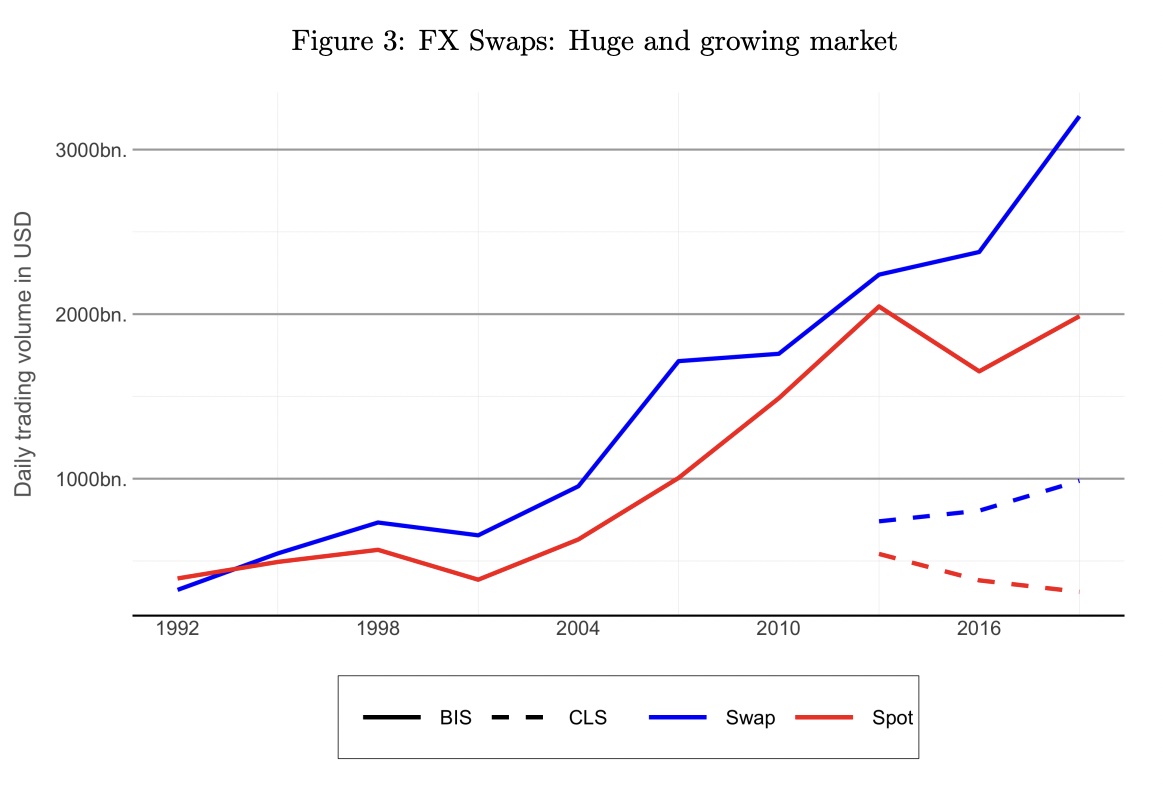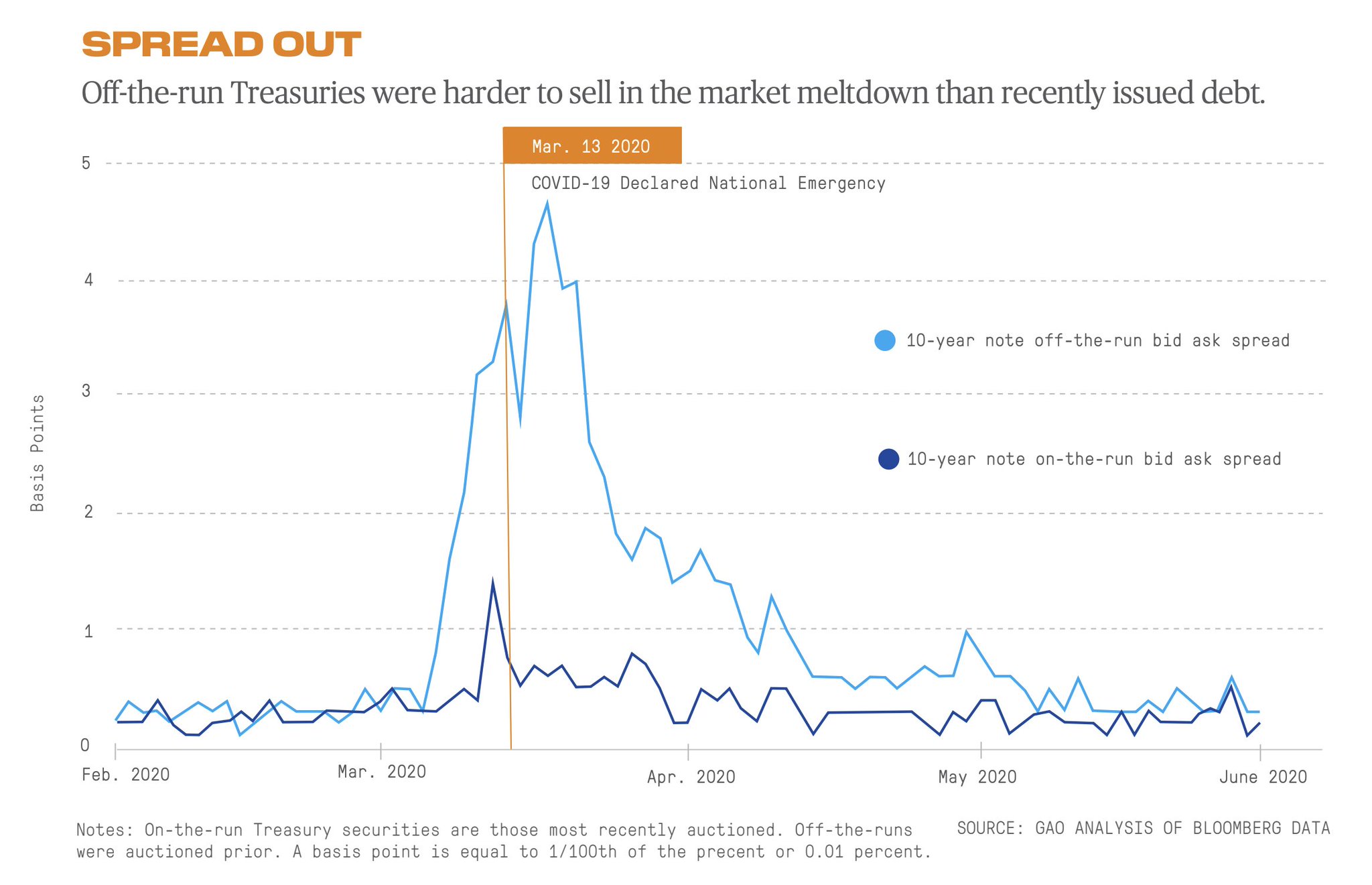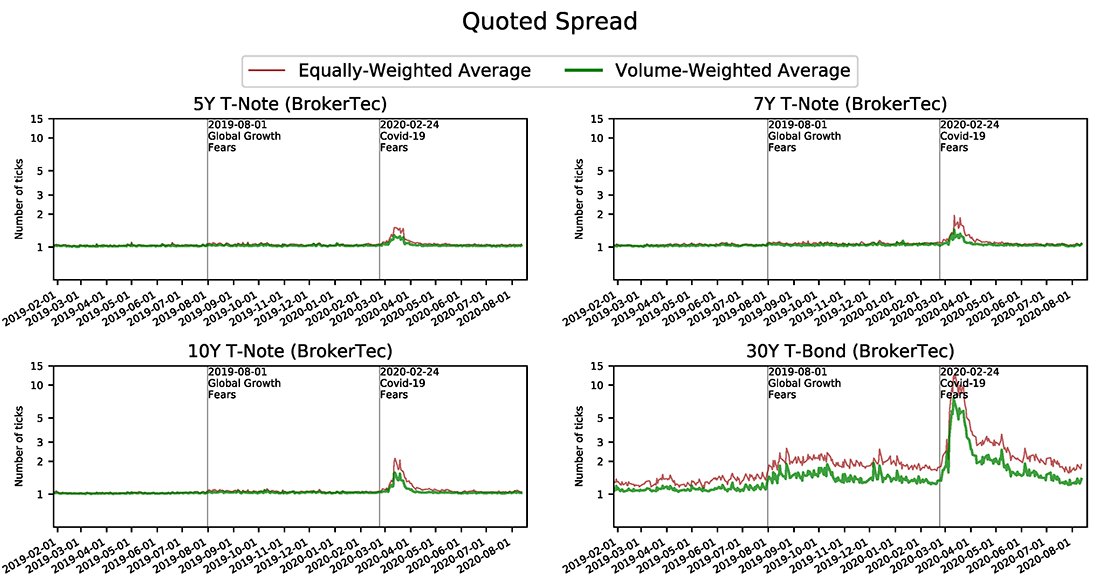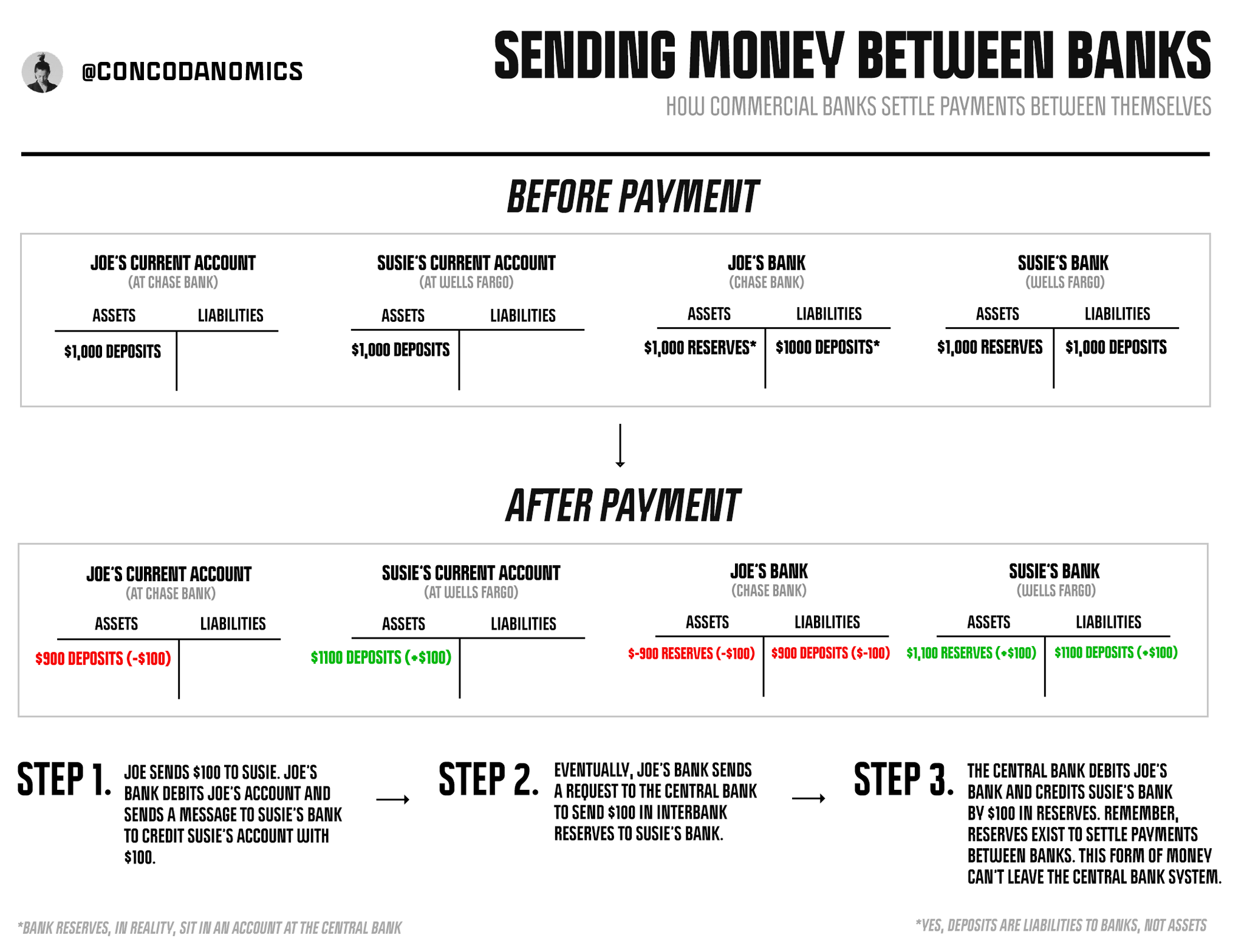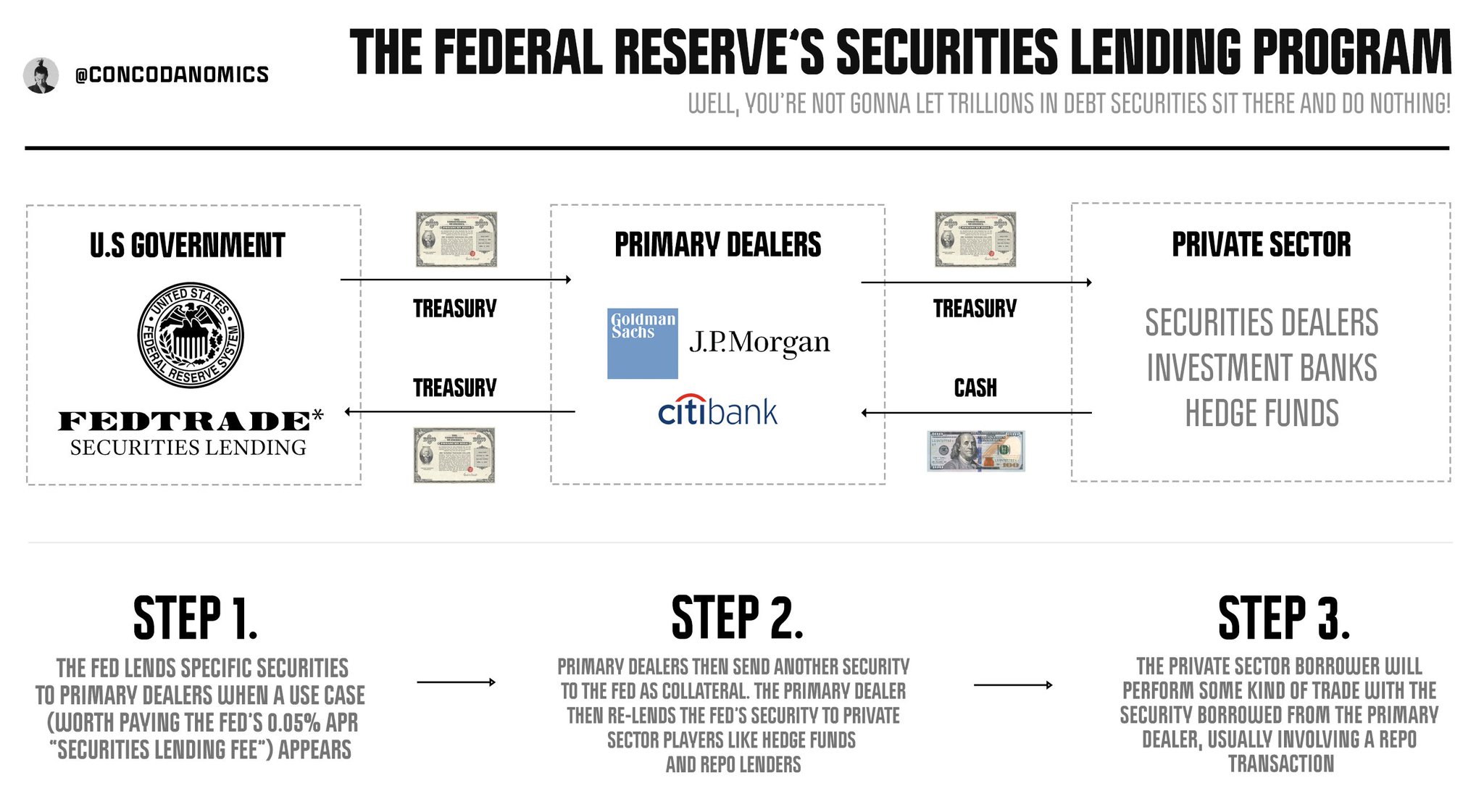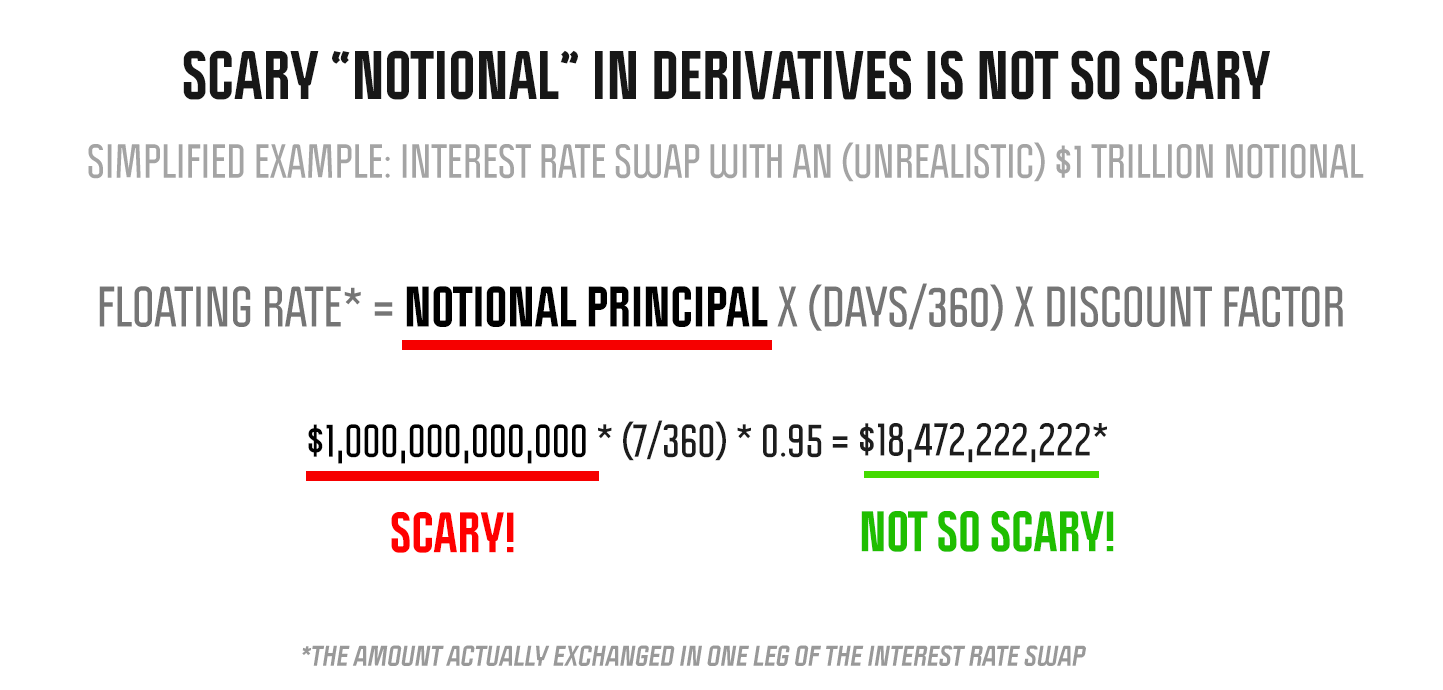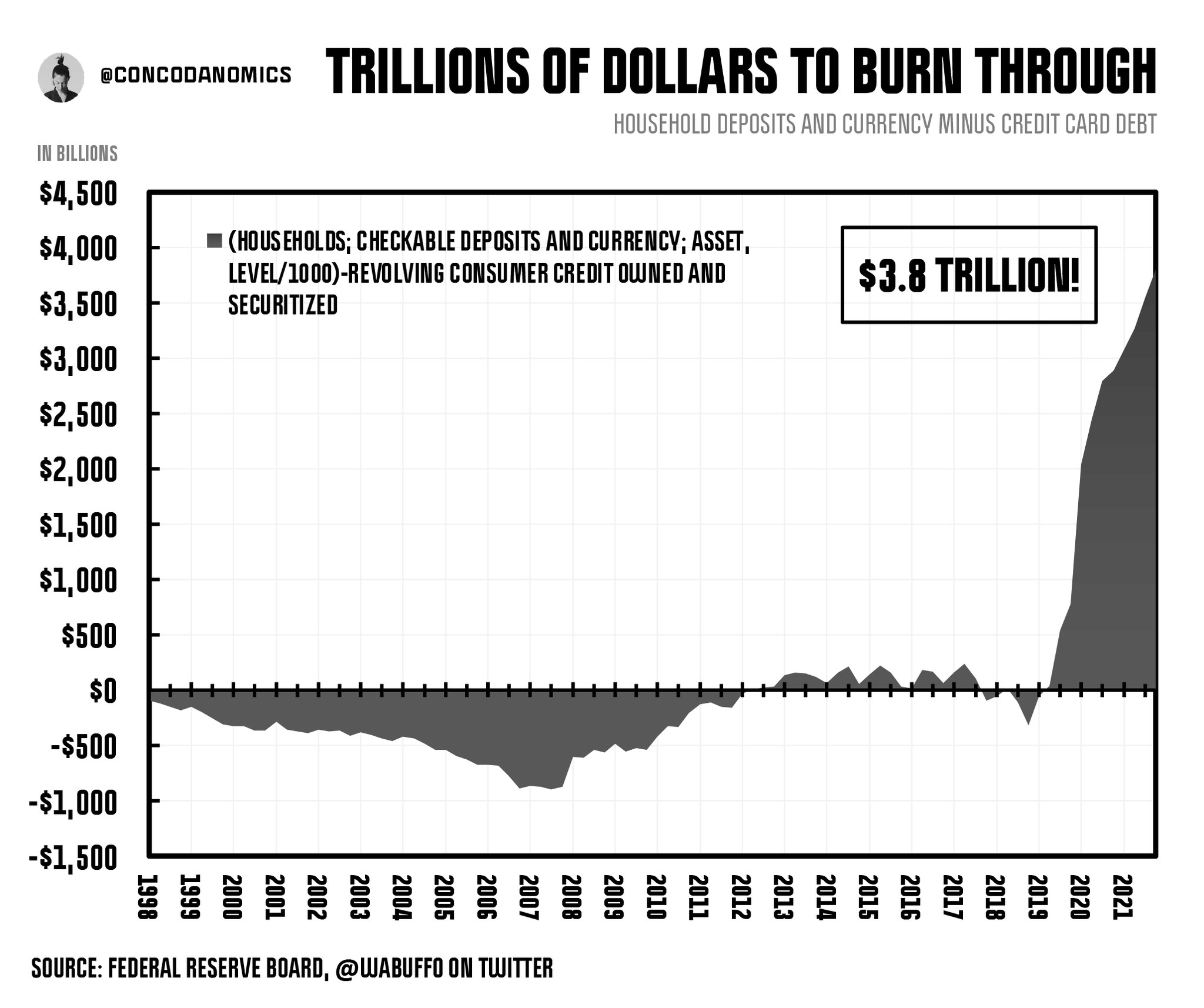Thread
The Federal Reserve has initiated the ultimate rug pull, but trillions in excess liquidity has stemmed any major turmoil. Yet eventually, the Fed will not only need to intervene but expand its operations globally to preserve the status quo... 1/
It became clear during the COVID market meltdown in early 2020 that the Fed's dominance over global markets was not only going to prevail but prosper. As one of the most epic financial panics in history unfolded, the world's insatiable demand for U.S. dollars exposed itself...
Everyone rushed to exchange their assets for dollars, causing an immense surge in borrowing costs in all major funding markets, from the Eurodollar system to money market funds. Even foreign exchange (FX) swaps, the most liquid market globally, suffered enormous stress...
Contrary to popular belief, the FX swaps market had grown larger and more liquid than actual (spot) FX. When the largest market makers began to pull out of FX swaps during the COVID crisis, the resulting illiquidity and volatility spilled over into traditional foreign exchange...
During the height of the crisis, the FX swap "basis" (the most reliable indicator of a global dollar shortage) grew increasingly negative, revealing that the Greenback was becoming ever scarcer. The hoarding of the world's global reserve currency had reached alarming levels...
It was only after America's monetary leaders fired up their liquidity cannon that GLOBAL markets started to recover. Using an arsenal of credit facilities and swap lines, officials pumped enough bucks into onshore, offshore, and shadow financial systems to stem the contagion...
The currency markets, however, were only one of the numerous ecosystems that needed Fed intervention to regain stability. The panic-induced dollar shortage had caused the market many believed to be invincible to fragment. The U.S. sovereign bond market was becoming illiquid...
Concoda's Illiquidity Spiral™ had emerged in the most systemically important market. The doom loop of volatility creating illiquidity creating more volatility (and so forth) had reached a point where traders could no longer turn their Treasuries into cold, hard U.S. dollars...
The weakest parts of the Treasury market had grown too unstable. Spreads in "off-the-run" Treasuries (all bonds issued after the latest auction of a particular maturity) had skyrocketed. Investors hoping to hold these bonds till maturity had to liquidate them to raise dollars...
The 30-year bond, one of the most illiquid maturities available, experienced the most disruption. Spreads exploded, resulting in investors having to accept lower prices when selling and higher prices when trying to obtain (what the world deemed) the most pristine collateral...
The secondary Treasury market tried to handle rising volatility and illiquidity during outright hysteria, but no matter what dealers tried, the market failed to recover. Spreads grew so wide and prices so erratic that the market broke down. Fed intervention was inevitable...
The idea that monetary leaders could simply sit back and wait for an equilibrium, where every malinvestment and profitless outfit vanished into oblivion, dropped dead quickly. By 2020, global finance had become so interconnected that non-intervention would ensure total ruin...
It became clear that not even the asset backing the U.S. global hegemon was sacred. Treasuries were no longer risk-free until their backer came to the rescue. Eventually, the Fed's inaction would have led to a doom cascade, one that left every U.S. citizen unable to transact...
It's not well known that U.S. dollars are also named "Federal Reserve Notes" by the American government. In a fiat system, the issuing power dictates what backs its currency, and with America, that's U.S. Treasuries. These not only collateralize physical cash but BANK DEPOSITS...
And not just bank deposits but "bank reserves": interbank money used by commercial banks to settle transfers of customer deposits and payments between themselves...
Using their Fed master accounts, banks settle payments via their reserve balances. Meanwhile, they debit your account and credit your friend's account. This mechanism, though, relies on banks' faith in reserves and the Treasuries backing them. No faith in bonds? Panic ensues...
Without trust in the central bank's liabilities and FedWire (the national payment system), the mechanism to transfer money in the U.S. economy breaks down. Banks like Signature, who have been trying to ditch crypto deposits after recent events, may decide to hoard instead...
This is why any Treasury market turmoil must be subdued by the Fed. The U.S. central bank must also avert stress in all other funding markets to prevent market participants from mass-monetizing Treasuries. The Fed has now become a volatility suppressor, in more ways than one...
After pumping trillions of dollars into the system during COVID-19, in what was likely hysteria and panic more than outright malice, the U.S. government along with the Fed have taken the concept of "serving the private sector" a little too far...
Over the last few decades, the Fed has become so increasingly entrenched in the financial system that envisioning a system without the U.S. central bank has grown unthinkable. Ever since the COVID binge, this has grown even more true...
The financial behemoths, whatever they might say about free markets, now love to feast on assets issued by the government, not just from auctions, but from the Fed's balance sheet. By lending bonds from its vast portfolio, the Fed has bolstered its liquidity machine further...
Out of the enormous ~$5 trillion in Treasuries sitting on its balance sheet, the Fed now loans out billions in specific issues daily (to primary dealers like Goldman Sachs and Nomura) through its Securities Lending™ facility...
When primary dealers find an opportunity worth paying an extra 0.05% "lending fee" to the Fed, they will borrow Treasuries from its SOMA (system open market account) portfolio. This usually involves charging a higher spread to hedge funds looking to obtain specific securities...
The Fed knows that if market participants withdraw from all these exotic markets, this will threaten the liquidity abundance machine it's assembled. Plus today, in the complex system that monetary alchemists have built, mass liquidity injections are the default crisis solution...
According to the BIS, the next use of the Fed's "volatility suppressor" may come when a large number of derivatives roll over in the coming year. But this seems to be another silly (and hilarious) warning over "notional" derivative exposures producing financial crises...
"Notional" in derivatives has multiple meanings, and parties involved in these "hidden debt" transactions rarely exchange the "notional" figure. With interest rate swaps, the most common derivative, the "notional" amount is part of a larger equation to calculate cash flows...
An interest rate swap with a (totally unrealistic) $1 trillion notional will only incur a double-digit, billion-dollar loss if short-term rates rose 5%, a colossal move exceeding even the COVID-19 blowup...
As @SantiagoAuFund points out "quadrillions in notional derivatives exposure" only becomes an issue when paired with extreme volatility. But as we now know, the Fed (the only entity that can quash such volatility) stands ready to neutralize this threat more than ever...
What's more, since 2008, extra safeguards have been enforced. Central clearing and margin requirements are just some measures implemented to prevent blowups. COVID also wiped out any excessive foolishness, like selling exotic vol derivatives that could incur 50,000% losses...
Even so, someone will eventually channel their inner Bill Hwang and devise the next monetary timebomb. Though it will likely take many years for someone to develop a taste for creating extremely risky products. Humanity has apparently learned its lesson, at least, for now...
The world of finance has realized, especially over the last few years, that it's not only much safer to lend against assets they'll obtain if a borrower defaults. But also assets that the Fed will do anything to preserve when a crisis emerges...
The next blowup, however, may take time to surface. Like other periods, the post-COVID era is unique: Growth is slowing and liquidity has been declining, yet a gigantic amount of monetary injections has provided a large buffer against volatility...
Recently, after the borrowing costs surged in a "dollar squeeze" (the sudden drop in the right-hand chart), funding costs remained elevated. Yet, no major upset emerged. The dollar even began to weaken after recent CPI readings eased inflation fears...
Today, billions in extra cash and securities lie on the balance sheets of U.S corporates, while TRILLIONS in excess dollars remain parked at the Fed's reverse repo facility, paying a juicy "risk-free" 4.40%. This money has yet to jump into riskier markets...
Then, there's the TRILLIONS in consumer bank deposits pumped into the system during the pandemic, which have provided yet another massive cushion, even after accounting for credit card debt. Markets are sinking albeit slowly, because there's always a bid...
(h/t @wabuffo)
(h/t @wabuffo)
And when it comes to actually settling payments between banks, the Fed will need to remove TRILLIONS in bank reserves through its QT program before any major interbank issues emerge. What's more, reserves have risen while the Fed is supposedly meant to be tightening...
What's more, the ever-expanding sovereign debt load issued by governments worldwide has mostly been financed at low, if not rock-bottom, rates. As for risky corporate debt, the amount of high-yield junk bonds needing to be rolled over remains trivial, until 2025...
Eventually, however, liquidity in the global financial system will dry up once again, and monetary officials will execute their plan of action: suppress market volatility at all costs by turning on the liquidity taps to the maximum...
Global financial behemoths are already well hedged via interest rate and currency swaps. But if these derivatives go sour, the Fed will bail them out accordingly. Its liquidity backstop stands ready to suppress volatility (and provide dollars to almost anyone) globally...
The global financial behemoths will implore not only the Federal Reserve but foreign central banks, which have become part of a vast web of dollar liabilities, to fire up their liquidity engine once again...
Foreign banks with no direct access to the Fed's facilities will turn to their central bank, who'll demand the Fed to ramp up dollar lending via its swap lines. Knowing what could be at stake, they will have no hesitation to provide liquidity...
The mass liquidity injections of COVID-19 will not only repeat but become conventional monetary policy. A global "QE". We already live in the age of "refinancing at all costs", but this will be the point of no return. Every U.S. ally, with no other option, will jump on board...
And for countries like China which are not in America's good books, but whose financial health is key to protecting global economic stability, the Fed's FIMA Facility (Foreign and International Monetary Authorities) will offer unlimited dollar loans in return for U.S Treasuries..
Calls for a clean slate, a Great Reset™ are no longer viable in the overly interconnected system the U.S empire has built. It's either provide liquidity or let the global system unwind until extinction. The majority will inevitably choose the Fed's liquidity engine...
Even though calls to decentralize the global financial system have grown in recent years, history shows it's antithetical to financial stability. We'll repeat our strong tendency to build ever greater power structures and do little to contain them...
With the U.S. firmly in power, the Fed increasing its global monetary dominance appears likely. The American hegemon can offer an endless supply of carrots on sticks, and everyone will bite. The Dollar's dominance over global finance will survive longer than anticipated...
Yet the U.S. won't stop until every threat has been neutralized. Next, they'll come for shadow banking systems, trying to gain more authority over opaque offshore markets. When those blindspots disappear, the Fed's goal of becoming "the world's cashier" will be completed...
Thanks for reading!
If you enjoyed this, feel free to retweet the opening tweet of this thread and follow @concodanomics for more.
You can also subscribe below to receive free in-depth articles about geopolitics, finance, and economics in your inbox.
concoda.substack.com/subscribe
If you enjoyed this, feel free to retweet the opening tweet of this thread and follow @concodanomics for more.
You can also subscribe below to receive free in-depth articles about geopolitics, finance, and economics in your inbox.
concoda.substack.com/subscribe
NEW ARTICLE: The Federal Reserve's Gambit
The U.S central bank's global expansion is not only its next logical move but the only conceivable option
concoda.substack.com/p/the-federal-reserves-gambit
The U.S central bank's global expansion is not only its next logical move but the only conceivable option
concoda.substack.com/p/the-federal-reserves-gambit
